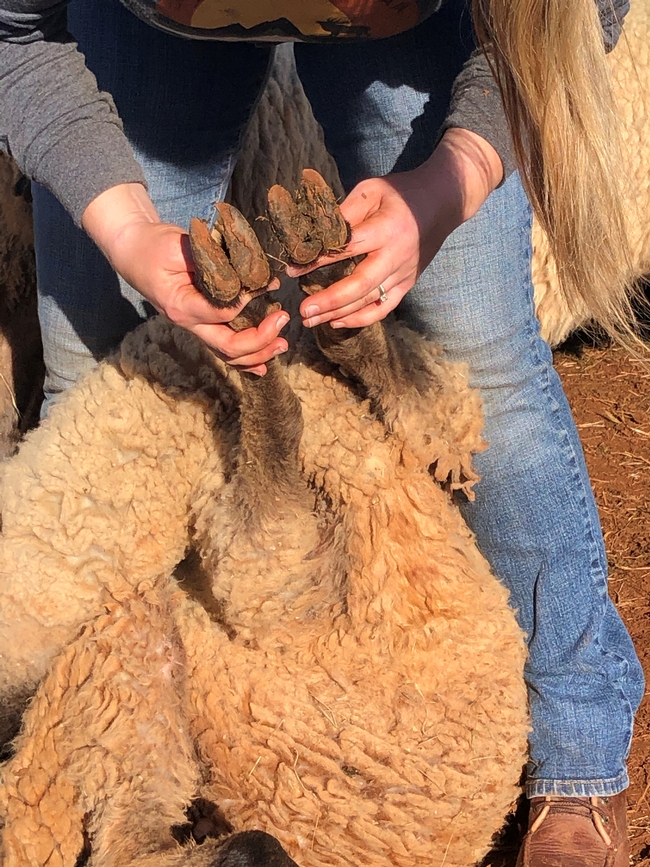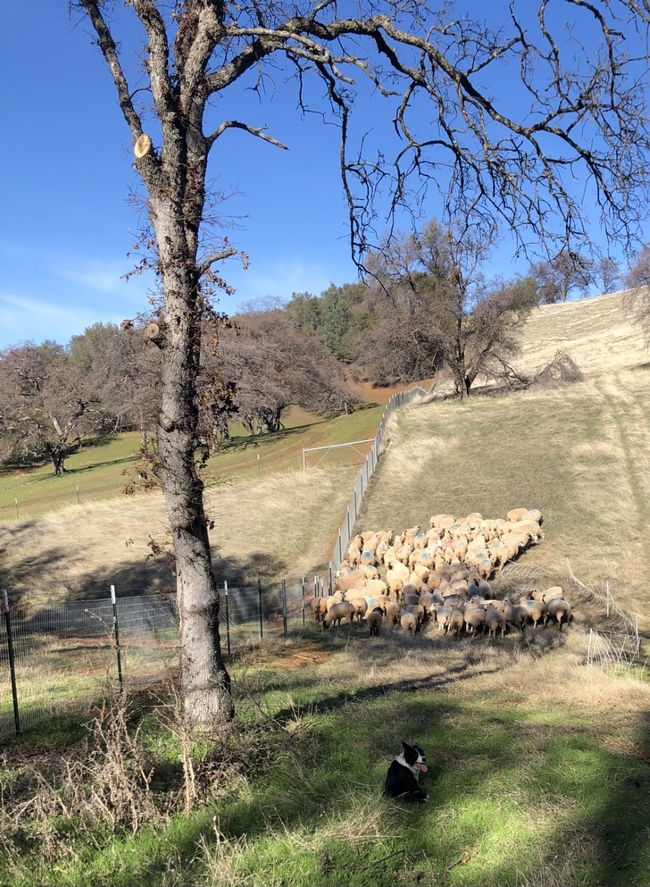15 years of experience with lameness in sheep
During the first half-decade we tried to raise sheep commercially, we battled a variety of foot issues. Seems like we had just about every problem a sheep producer could face - foot scald, foot rot, you name it. We trimmed feet 3-4 times a year. We tried foot baths of all sorts. We treated infected sheep with antibiotics and topical sprays. We vaccinated every ewe twice a year. And we culled any sheep that didn't respond to treatment or prevention.
Our experience with lameness mirrored that of most sheep producers who've dealt with the problems. Trimming 3-4 times a year was a significant labor expense. Treating sheep with antibiotics was expensive, too. Sheep that were limping simply didn't perform as well as sheep that weren't- which translated to lower reproductive rates and lighter lambs. Since we often had our sheep grazing along public roads, the public perceptions associated with limping sheep or sheep that are grazing on their knees was a persistent a constant problem, as well.
Fortunately, we kept decent records about the sheep we treated for lameness. When the 2014 drought forced us to sell ewes, chronic foot problems were among of our culling criteria. And since that time, our lameness issues have been greatly reduced. In the last seven years, we've only trimmed feet during our pre-lambing vaccinations - just once a year.
This January, I invited our new UC Davis Sheep and Goat Extension Veterinarian, Dr. Rosie Busch, to join me on vaccination and foot trimming day (in a thinly veiled attempt to get some help!). Dr. Busch and I have been talking about putting together a video with the latest information on foot rot and food scald, and we thought this would be a good chance to get some real-world photos and video footage. In anticipation of our work day, she searched the literature for the most current approach to managing foot health.
Dr. Busch took the time to explain the various causes of lameness - knowing what we're dealing with is critical to developing a treatment plan. The information below is adapted from the Veterinary Ireland Journal.
- Foot Scald: Symptoms include moist, painful inflammation of skin between the digits. No lifting of hoof. In adult sheep, scald is often early foot rot and probably should be treated as such (see below). Antibiotic sprays or foot baths are sufficient treatments in lambs.
- Foot Rot: Starts between digits but progresses to under-run hoof. Foot rot has a distinctive smell. Infected sheep will spread infection. Chronic cases have misshapen hooves. Treat with injectable antibiotics and consider vaccinating the entire flock.
- Contagious ovine digital dermatitis (CODD): Very painful and invasive. Lesions start at top of hoof. Rapid spread to under-run hoof wall. Treat with injectable antibiotic and antibiotic spray together. Antibiotic foot baths are another treatment option.
You might notice that foot trimming doesn't appear on the list of treatments. In fact, the journal article says,
"Foot trimming was long recognised as an appropriate management technique for sheep until considerable research suggested that routine trimming can increase levels of lameness. More recently, it was shown that even trimming the hooves of lame sheep may lengthen the time it takes for them to heal."
All of which brings me back to our experience this year. I had started to reduce the amount of trimming we were doing last year. With Dr. Busch's direction, we trimmed feet on just 9 ewes out of the 115 that came through the corrals this year. We found no active foot rot; rather, we trimmed any feet that had conformation problems. We also recorded the ear tag numbers of each ewe that was trimmed. In at least one case, the ewe's foot conformation was so bad that we marked her to cull when we wean our lambs. The other ewes who were trimmed will be tracked in subsequent years. Foot health, it seems, is actually better when we do less!
Watch for our video in the next several months!

